- Manufacturer: AOC
- Platforms: PC
- Reviewed on: PC
- Supplied by: AOC
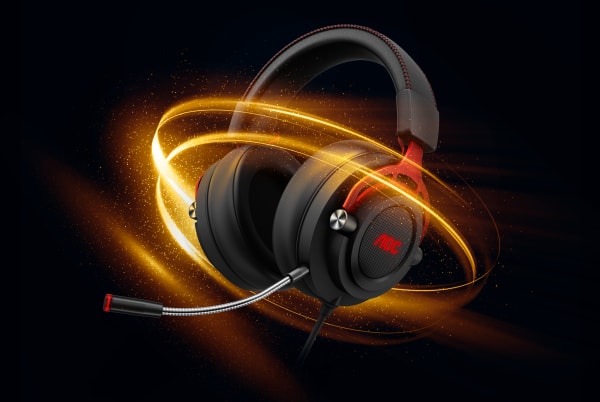
AOC has taken a bold step out of the monitor market (where they have been killing it, may I add) and are trying their hand at the peripherals game, starting with headsets.
Enter the AOC GH300 virtual 7.1 surround-sound, RGB, USB headset.
I can not describe how ecstatic I was to hear that AOC was entering the Peripherals market. I use an AOC 27G2U monitor every day and could not be happier, so my expectations were high for what AOC would come out with in terms of a headset.
The unboxing experience was quite straightforward. The packaging is styled in black and red (AOC’s favourite colours) and features silver reflective AOC logos and imagery of the headset. Inside, a moulded black plastic insert holds the headset inside. Given there are some stellar unboxing experiences when it comes to headsets, this is fairly basic, but the unboxing is unimportant. What is important is the AOC goodness it contains.
The GH300 is a visually appealing headset. It has really quickly become one of my favourite headsets in terms of its styling. The headband is completely covered in leatherette with red stitching down the sides, the AOC logo is embossed on the top and it is filled with plush foam on the bottom, each end finished with a large black plastic end piece.
This led to the striking red brushed steel sliders. These are the most unique style choice on the GH300. They are stronger than any headset I have used in recent memory, yet remain very thin, adding a quality, modern and clean feel to the headset. It has a defused reflectiveness to it that I feel you can only achieve with genuine metal. There are always products featuring fake brushed metal, but the real thing feels and looks so clean, and it’s almost satisfying that they are cold to the touch when you put them on.
These then wrap halfway around the large circular cups attached by 2 textured circular bungs that add a nice extra metallic pop. The cups are fairly big, made entirely of smooth black plastic with a large grill on the centres with the AOC logo underneath them. It appears at first that the AOC logo is white, but as soon as you plug in the GH300 you will see it illuminate.
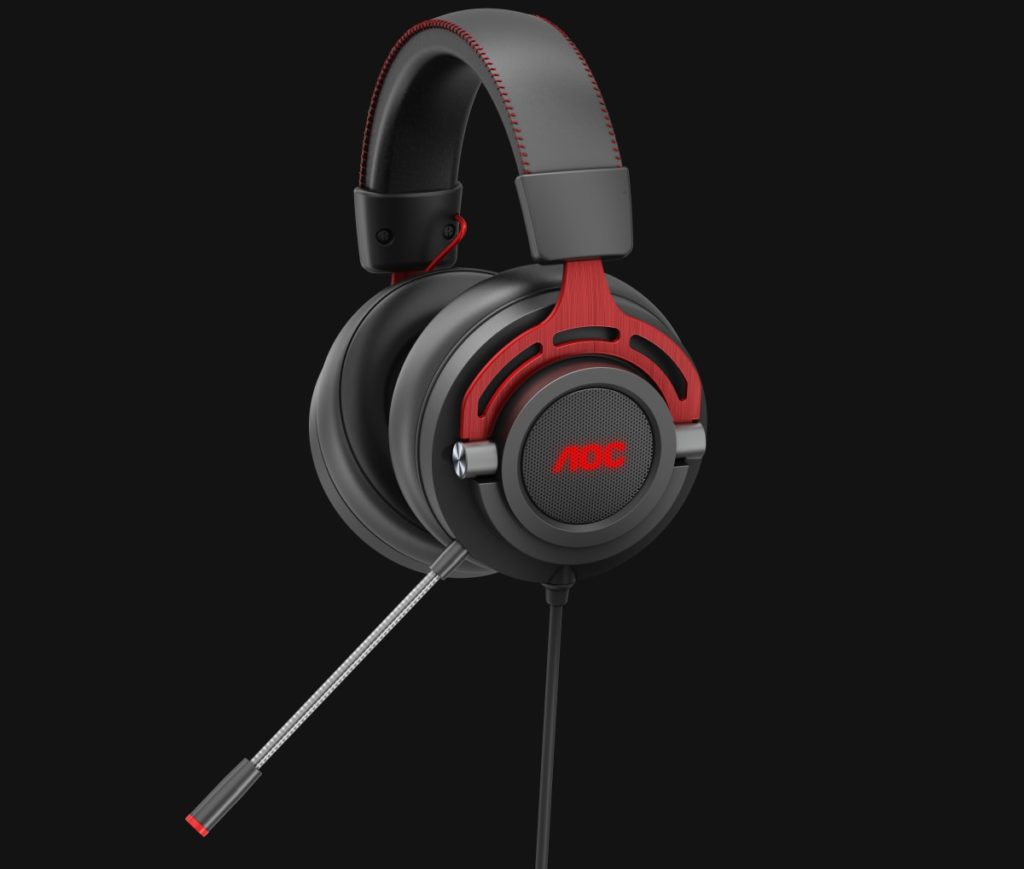
The RGB AOC logo can be customized in the AOC audio center software (more on that later) to either static, breathing, cycling or heartbeat. The effects are limited and I could not get the heartbeat to work at first, later realising that it is reactive to sound.
You can select any colour on a full spectrum chart or select from a few preset colours.
The RGB is fairly bright and vibrant and looks great blasting through the grill. I am admittedly a sucker for RGB on headsets. For content creators, they are the most seen part of your setup, so I am a fan of anything that can add some personality and customization to them.
The cups themselves are finished with a large lush set of memory foam filled leatherette cushions. These are large and circular, easily fitting over your ears; The depth is fairly standard, just about enough for my ears not to touch the drivers. I usually prefer fabric cups over leather purely due to the sweat factor, but these leatherette cups do provide a comfortable fit with decent sound isolation helping the bass hit just a little harder.
I’m not certain but from using the GH300 I would say the cups are closed back despite the open grill that i assume is purely for aesthetics. My preference is for open-back headphones; I am not overly focused on bass for my use, usually opting for a high and mid-heavy audio tune. That said, the GH 300 is one of few headsets I have been using that are closed-back yet enjoyable, as the bass is not overbearing.
I found the flexible mic protruding from the left cup a little too short for my personal taste. I prefer long mics that sit in front of my mouth or at least reach round towards the front of my mouth, for example, Astro’s TR mic or the mic found on the Roccat ELO stereo. This is purely personal preference, but I feel that generally the more front and centre a mic is, the clearer and easier it picks up your voice without needing to have a huge pickup range.
The neck is flexible but it has a certain range of movement that it will ping back to. So, despite the fact it is completely flexible, it will only stay in a certain range. Due to its length, there isn’t a huge amount of adjustment needed, and where it falls is usually right where you want it.
I would have liked a metal gooseneck style with a bit more length. This would have allowed for better positioning and added aesthetic appeal, with the metal complimenting the steel sliders.
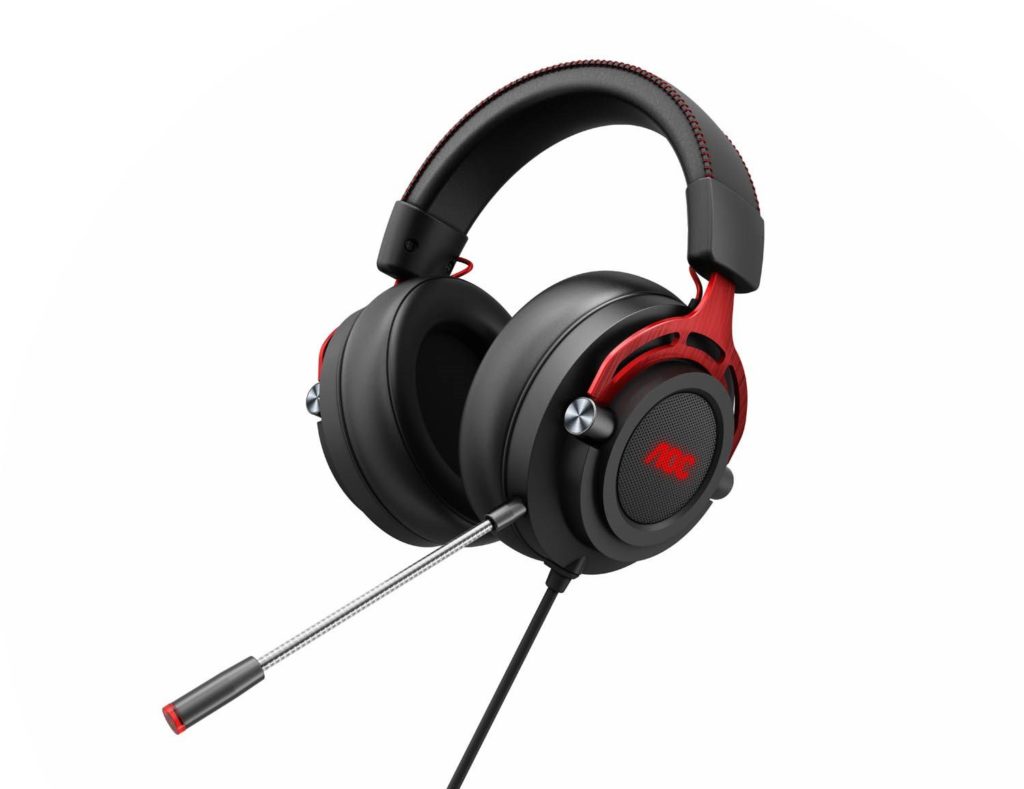
The mic itself is an omnidirectional small cylinder cardioid pattern mic. Its pick up is pretty good, and it never seemed to miss my voice, but as normal with cardioid mics and most headset mics it picks up my keyboard quite frequently. This will depend on how hard you tap and the style of keyboard you have of course. My heavy fingers and mechanical blue clicky switches are probably the absolute worst-case scenario, and with that considered the GH300 performed pretty well.
Clarity was fairly average, though slightly muffled on the low end. This again is fairly standard for most gaming mics, but compared to most mics in the GH300’s £50 price range it’s actually pretty good.
The mic also has a red LED ring on the end that indicates whether the mic is muted. This is hidden out of the box by the boom fitted to the mic, so I have opted to leave it off. It’s nice that it’s included, but I haven’t found much of an issue with hot miking, so I leave it off.
The GH300 is connected by a lovely black braided cable ending in a nice chunky USB. The inline controls are in the form of a box with a large dial, a set of rocker switches and 1 side button. The dial adjusts the headset’s volume, and the rocker switch on one side toggles the mic muting, while the other toggles the RGB on and off, And the side switch mutes and unmutes the desktop audio of your PC. I would have liked it if the volume dial controlled the actual desktop volume rather than the volume of the headset itself.
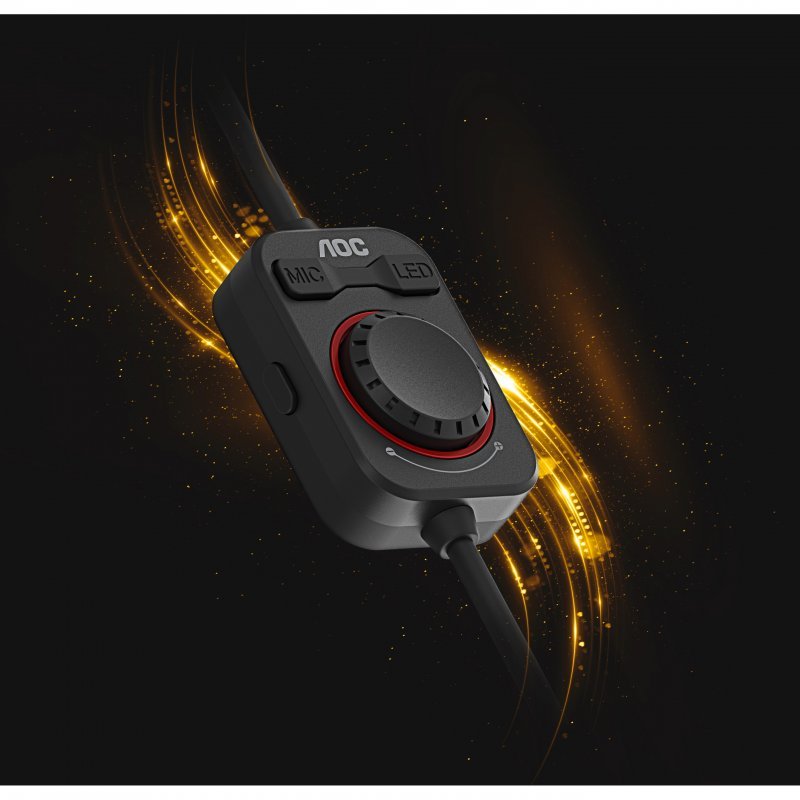
As the inline controls are so big, they could have done with being more centred on the cable so that that box could sit on the desk. It wouldn’t stay there for long as it is deceivingly light and would get pulled around, but it would at least stop it from dangling off the ear cup.
The sound quality from these beastly 50mm drivers is actually surprisingly good. Whenever I try a brand’s first headset I always expect one thing… Bass boost. It is always the first damn thing a brand does: Take a set of drivers, give them bass boost, wrap them in an edgy design and call it a gaming headset. Well, AOC as always did better than the rest, making a £50 headset that doesn’t rely on bass boost… award worthy.
The GH300 is fairly average without its software, it just sounds like a nice set of drivers (WITH NO BASS BOOST). Once I managed to find the AOC software it automatically checked the box labelled as HI-FI, which enables hi-fidelity 24bits/96KHz audio. When the software took control of the headset the soundstage widened a fair amount and the quality and clarity of the audio improved. At this point, I started to enjoy the GH300 much more.
I played some Battlefield, COD, Forza and Halo to get a good feel for the audio, as these are games I am all too familiar with their audio, and the GH300 was performing admirably. The sound stage is not super wide; when things get past double-digit meters away from you in Battlefield the audio plateaus into more low end and becomes hard to distinguish from much further away noises, but again this is a £50 headset and for that price having any kind of decent sound stage is good.
The audio is surprisingly balanced and clean, and I never really noticed any muddiness. Weapons had good punchy audio, explosions felt powerful but not overpowering and queue noises like footsteps were distinguishable and audible, I very much tip my hat to the GH300 for its performance.
Now onto the software, and as I have mentioned a couple of times, this is the biggest issue I had with the GH300. The AOC audio center is very simple software but it’s the lowest point of the GH300. Starting with the look, the AOC audio center looks dated. It looks like something I would associate with Alienware in the early 2000s. The software also suffers from some strange wording, for example, the heartbeat mode I mentioned earlier. I sat there for 10 minutes waiting for the headset to mimic a heartbeat and pulse with light. Eventually, I gave up and stuck some music on it, and it started pulsing away… heartbeat apparently means sound reactive.
The breathe and cycle effects are fairly standard wording but what we all know as static is labelled as constant. I had no issue understanding what that meant but it seems a strange choice.
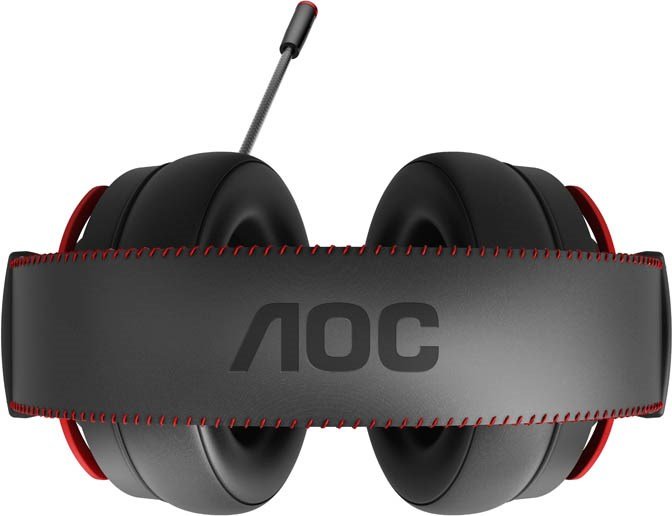
The software is also extremely simple, with three tabs for speakers, mic and LED. Speakers allows you to adjust the master volume (once again not controlled by the dial on the headset, so that’s three volume controls now, including desktop) and then something called front, with a left and right adjustment. This is actually the balance adjustment so that you can boost one ear over the other. When it’s available, I adjust the balance to favour my right ear as for some reason it always sounds quieter (probably too many years of having the window open on the motorway).
Under mic, you will find Mic in with a left and right (no idea what this does) and monitor with left and right. Monitor is for mic monitoring so the mic plays back into the cups in real-time. It’s unusual to have a left and right adjustment for the monitoring but it’s actually a very useful feature and offers more control.
For the LED options, we touched on the 4 effects that are available; Constant, breathing, cycle and heartbeat. Other than this there is a large box with the colour selector and a few standard colour options.
Despite its simplicity and dated look the software is still serviceable and does its job. The software is obviously new and with time will improve, especially with AOC’s plans to expand its peripherals line. I would imagine that eventually, the AOC audio center will evolve into a command center that controls all AOC peripherals, and hopefully receives a visual and feature-based overhaul.
Summary
The AOC GH300 has far exceeded my expectations in terms of what I expected from a £50 headset, especially as this is AOCs first crack at it. Clean, non-bass boosted audio with a good sound stage, RGB and more volume control than even a DJ could want are paired with a gorgeous look and feel that makes the GH300 a great choice if you are in the market for a budget-friendly PC headset.
Despite the software’s lacklustre appearance and the slight shortcomings that will likely be ironed out with AOC’s next headset, the GH300 is a no brainer. It’s great value, it looks great and it will compete with headsets costing double or more its price.

